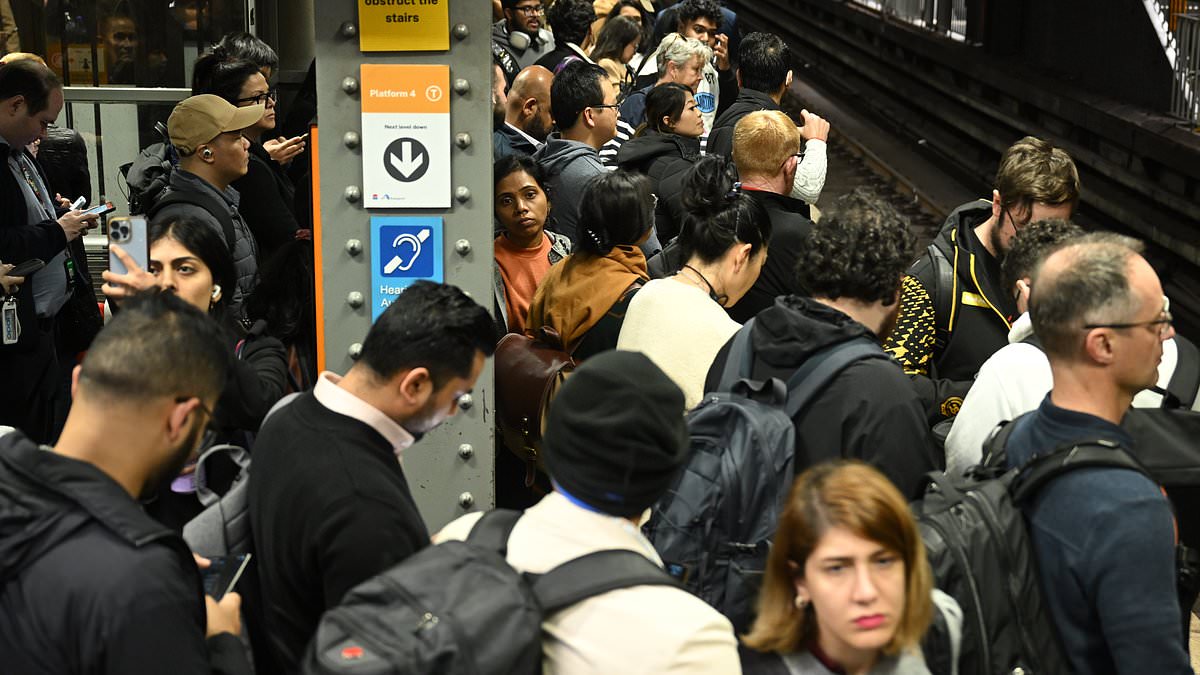Immigration levels are soaring under Anthony Albanese – with almost two-thirds of new foreigners moving to Sydney and Melbourne and putting pressure on water and transport infrastructure.
took in 340,800 migrants last year, higher than Treasury’s pre-election Budget forecast of 335,000 net arrivals for the 2024-25 financial year and 76 per cent higher than the pre-pandemic intake of 194,000.
The new figures were released on Thursday, a day after Treasurer Jim Chalmers admitted would struggle to build 1.2million more homes in the five years to 2029 to accommodate the population explosion.
‘The 1.2million homes is a very ambitious target, deliberately so and it will be hard to get there, but it’s not impossible to get there but everyone needs to do their bit,’ he told the National Press Club in Canberra.
While immigration levels are down on the record-high levels seen two years ago, the population influx from overseas migration is overwhelmingly flowing to ‘s two biggest cities, Sydney and Melbourne – with NSW and Victoria having to house 207,233 new overseas residents.
That’s more than 60 per cent of the net intake of 340,800 permanent and long-term arrivals into .
Sydney, ‘s most expensive city, is so unaffordable people are leaving in droves, with 28,118 people leaving New South Wales last year for another state, new n Bureau of Statistics data showed.
This big exodus from NSW – as 106,730 new overseas migrants moved in – is putting pressure on other states and could potentially see the GST broadened so the states and territories had more money to spend on infrastructure.
Queensland took in 25,940 new residents from other states and 56,877 from overseas, leading to population growth at a slightly above-average level of 1.9 per cent.
Victoria also reported a higher population growth pace of 1.9 per cent with only 3,203 people leaving for another state as 100,503 new migrants moved in, mainly to Melbourne.
Western had the strongest population growth of 2.4 per cent as 12,612 people entered from other states and 45,124 people moved in from overseas.
‘s overall population grew by 1.7 per cent in 2024, with overseas migration making up 76 per cent of the 445,900 increase factoring in births and deaths.
Below average population growth was recorded in South (1.1 per cent), Tasmania (0.3 per cent), the n Capital Territory (1.4 per cent) and the Northern Territory (1.2 per cent).
Broader GST possible to help states
Chalmers on Wednesday declined to rule out broadening the 10 per cent GST so the Commonwealth Grants Commission could distribute more funds to the states and territories that have to house the soaring population.
Items like fresh fruit and vegetables, bread, cooking oil, meat and unflavoured milk were exempted from Good and Services Tax under a political deal reached in 1999 between former Liberal prime minister John Howard’s government and the n Democrats in the Senate.
‘What I’m going to try and do – because I know the states will have a view on it, I’m going to try not to dismiss every idea that I know that people will bring to the roundtable,’ Chalmers said.
‘I suspect the states will have a view about the GST – it’s not a view that I’ve been attracted to historically but I’m going to try not to get in the process of shooting ideas between now and the roundtable.
‘One of the ways that I am going to be inclusive and respectful in the lead-up to this roundtable is I suspect people will raise that question.’
More pressure on infrastructure
The big overseas influx is particularly putting pressure on utilities.
Sydney Water had proposed to increase its customers’ bills by 18 per cent from October 1, under its 2025 to 2030 plan, citing population growth.
A Sydney Water board meeting last year warned of the strain on infrastructure in the city’s outer suburbs, which house a higher proportion of new migrants.
‘The biggest drivers behind Sydney Water’s planned investments are growth and renewing existing infrastructure,’ the meeting minutes said.
‘Most of this investment will support growth in both new and established areas – especially in western Sydney, where development is booming and where population growth is pushing existing water and wastewater systems to their limits.’
To cope with the population surge, Sydney Water expected the average bill to rise by $226 during the next financial year, and by $111 every year until 2029-30.
